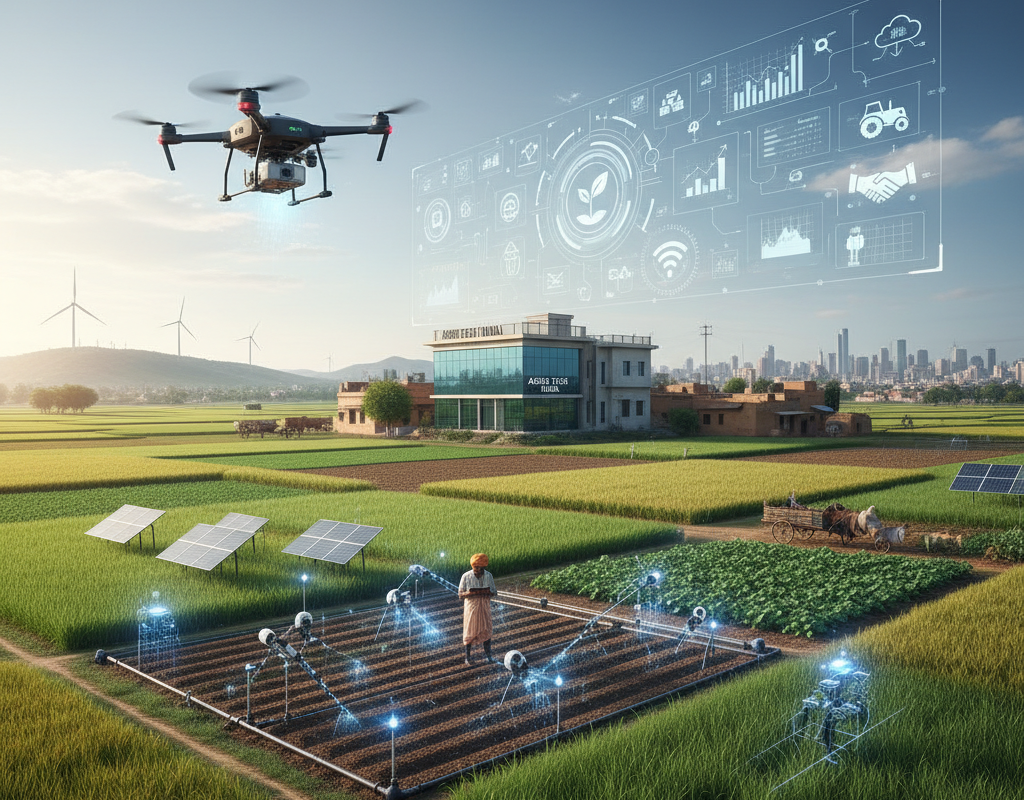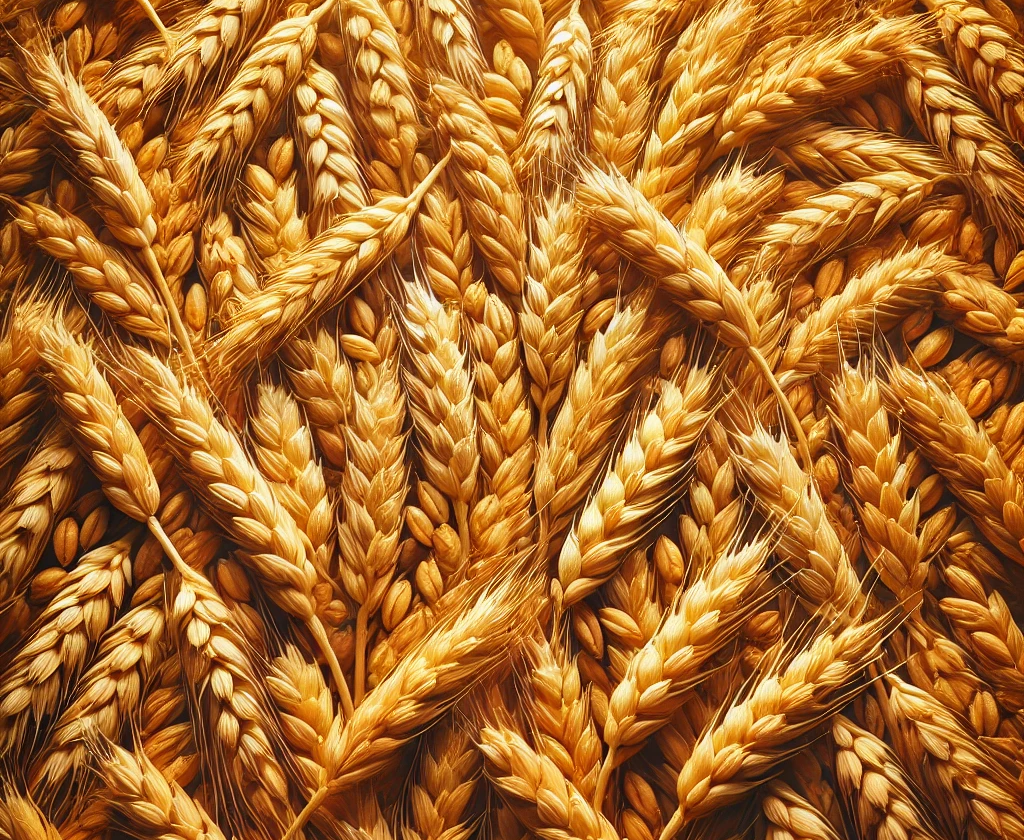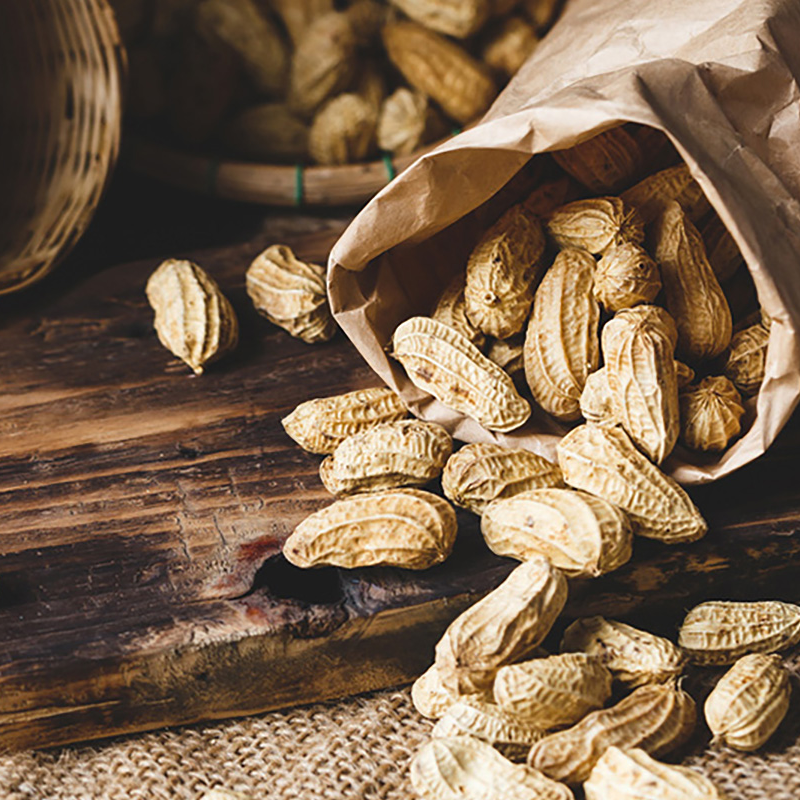Agritech & sustainability:
Climate smart farming solutions India needs today!
India’s farms face rising climate risk, squeezed margins and fragmented landholdings; challenges that demand affordable, scalable technology. Low-cost agritech can deliver resilience and higher returns when it focuses on practical tools: sensors, phone-first advisory services, micro-irrigation, and farm-as-a-service models for smart farming.
But how exactly are low-cost smart farming solutions unlocking climate-smart productivity for millions of Indian farmers? Let’s find out!
What does low-cost smart farming look like?
Low-cost agritech works best when it focuses on three essentials: simple sensors, connected advice, and shared services. Basic IoT in agriculture devices (soil moisture probes, low-power weather stations) combined with SMS or lightweight apps turn raw data into timely actions — when to irrigate, when to fertigate, or when to harvest. These smart farming systems often pair hardware with human-in-the-loop advisory services so that even non-technical farmers can act on insights.

The market is accelerating, and that’s good news for farmers!
India’s smart agriculture market size reached USD 714.1 Mn in 2024. Looking forward, IMARC Group expects the market to reach USD 3,837.6 Million by 2033, exhibiting a growth rate (CAGR) of 20.54% during 2025-2033. This momentum is mirrored by rising investment into smart farming technologies and an expanding ecosystem of platform players, device-makers and agri-advisory services.
Climate-smart farming must be low-cost and local
Climate-smart agriculture (CSA) is about raising productivity while reducing emissions and building resilience. For smallholders, the most effective CSA solutions are low-cost: low-energy drip irrigation, solar-powered cold storage, simple pest-monitoring traps, and local weather advisories that prevent crop losses. International institutions emphasise CSA as an integrated approach — combining land, livestock and water management — which low-cost agritech can enable on the ground.

Key low-cost technologies that scale
- Simple IoT in agriculture + SMS alerts: Affordable soil moisture or temperature sensors can extend battery life to months and send threshold-based SMS alerts, a more affordable pathway to precision irrigation.
- Farmer-facing microservices: Shared harvesters, drone spraying as a service, and rented sensor kits transform capital expenditure into pay-per-use models that smallholders can afford. These are core smart farming systems that democratize access.
- Satellite & phone-based advisory: Satellite imagery plus lightweight AI models deliver crop-stage detection and disease alerts without replacing local agronomists, part of the portfolio of smart farming technologies that matter most.
- Climate-indexed microinsurance & finance: By linking credit and insurance to weather or sensor data, farmers get risk-aligned support that reduces losses and improves financial stability.
Adoption realities and the opportunity
Despite momentum, adoption is uneven: fewer than one in five Indian farmers currently use digital technologies regularly, leaving a huge market for low-cost, easy-to-use tools that respect local language and literacy constraints. Meanwhile, India’s 120 million smallholders represent both the biggest need and the largest opportunity for scaled impact. By designing for cost, language, and shared ownership, agritech can reach the majority rather than a privileged minority.

A roadmap for scaling low-cost climate-smart solutions
- Design for affordability: Devices under ₹3,000 and pay-as-you-go services lower the entry barrier.
- Leverage existing channels: Agri-input dealers and FPOs can bundle smart farming services with seed and fertiliser sales.
- Focus on outcomes: Measure water saved, yield uplift, or income protection that farmers adopt when benefits are tangible.
- Public–private partnerships: Combine government schemes, local extension, and private platforms to subsidise early adoption and training.
- Local language, low-tech UX: Voice messages, IVR, and visuals beat complex dashboards for most users.
How can agribazaar help drive low-cost smart farming adoption?
agribazaar enables accessible and smart climate agriculture by embedding practical, affordable technology into its platform. Through its online input marketplace, agribazaar connects farmers directly with quality agri input sellers and suppliers at competitive prices, helping them adopt smart farming technologies without heavy costs. The platform’s weather-linked advisory, satellite insights, and data-driven crop recommendations support farmers in making timely decisions, essential elements of climate smart farming.
Features like the agribazaar Crop Doctor, real-time mandi price updates, and satellite-backed AgriBhumi land intelligence further help farmers optimise irrigation, input use, and crop planning. By combining market access, advisory, and data into a single ecosystem, agribazaar ensures that smallholders can gradually transition into smart farming and benefit from efficient, technology-enabled farming systems.
Conclusion: An urgent, affordable transition
India doesn’t need only high-end precision farms; it needs thousands of low-cost, high-impact interventions that make everyday farming resilient. Affordable smart farming, built on IoT in agriculture, pragmatic smart farming systems, and localised advisory services, is the quickest path to climate-smart farming that reaches real farmers, not just pilot plots. With the right mix of public support, innovative business models, and marketplace platforms, low-cost agritech can help India meet both productivity and sustainability goals in the years to come.
Disclaimer
The content published on this blog is provided solely for informational and educational purposes and is not intended as professional or legal advice. While we strive to ensure the accuracy and reliability of the information presented, agribazaar make no representations or warranties of any kind, express or implied, about the completeness, accuracy, suitability, or availability with respect to the blog content or the information, products, services, or related graphics contained in the blog for any purpose. Any reliance you place on such information is therefore strictly at your own risk. Readers are encouraged to consult qualified agricultural experts, agronomists, or relevant professionals before making any decisions based on the information provided herein. agribazaar, its authors, contributors, and affiliates shall not be held liable for any loss or damage, including without limitation, indirect or consequential loss or damage, or any loss or damage whatsoever arising from reliance on information contained in this blog. Through this blog, you may be able to link to other websites that are not under the control of agribazaar. We have no control over the nature, content, and availability of those sites and inclusion of any links does not necessarily imply a recommendation or endorsement of the views expressed within them. We reserve the right to modify, update, or remove blog content at any time without prior notice.








 Connect With Us
Connect With Us